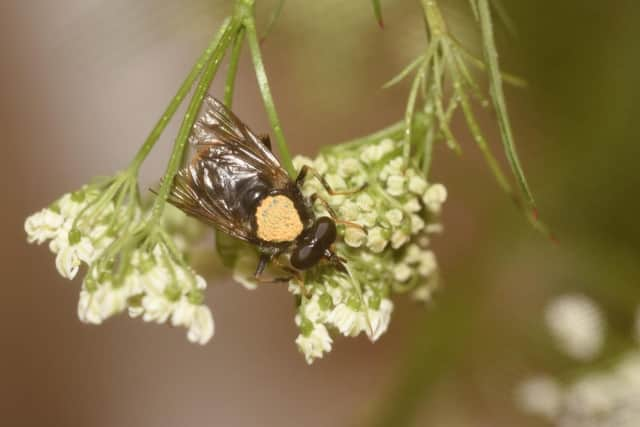No bovver: Breeding success for critically endangered native hoverfly at Scottish wildlife park
Pine hoverflies are on the brink of extinction across the UK, with no adults spotted in the wild for more than eight years.
It is thought only a few remain at a single site in the Cairngorms National Park.
Advertisement
Hide AdAdvertisement
Hide AdBut conservationists are hoping to halt their disappearance and reverse declines through a pioneering captive breeding and release programme, based at the Highland Wildlife Park, at Kincraig near Kingussie.


Now two years after the scheme began with just 25 larvae, the team has reported a record-breaking breeding season.
An impressive total of 6,925 individuals have been hatched.
The next stage will involve releasing the youngsters into the wild at a specially restored site in the Cairngorms.
Experts at the Royal Zoological Society of Scotland (RZSS), which runs the Highland Wildlife Park, are delighted at the success of the breeding programme.
“This record-breaking season is a vital lifeline and could represent a real turning point for the pine hoverfly, which is on the brink of extinction in Britain due to habitat-loss over the past century,” said RZSS conservation programme manager Dr Helen Taylor.
“Invertebrates are crucial to healthy ecosystems and are disappearing at an alarming rate, though sadly these species are often overlooked until it is too late.
“The wild population of this important pollinator is currently restricted to just one site – a forest patch in the Cairngorms National Park – which means we are now caring for many more individuals at Highland Wildlife Park than are thought to remain in the wild.
“There has been a huge amount of work involved in this project from our keepers, vets and conservation staff.
Advertisement
Hide AdAdvertisement
Hide Ad“Thanks to this dedication and collaboration, the future is looking much brighter for this rare species and it is really exciting to be able to progress plans to release some individuals back into their wild habitat.”
The project overcame a series of challenges to reach this new milestone, including lockdowns and staff on furlough leaving due to the Covid-19 pandemic, as well severe winter weather and a delayed spring with few flowering plants to feed the adult flies, which emerged early in May.
Planning for releases back into newly restored habitat in the Cairngorms is now underway in collaboration with the Rare Invertebrates in the Cairngorms project – a partnership between the RSPB, Cairngorms National Park Authority, Buglife Scotland, Butterfly Conservation Scotland and NatureScot.
A message from the Editor:
Thank you for reading this article. We’re more reliant on your support than ever as the shift in consumer habits brought about by coronavirus impacts our advertisers.
If you haven’t already, please consider supporting our trusted, fact-checked journalism by taking out a digital subscription.
Comments
Want to join the conversation? Please or to comment on this article.
